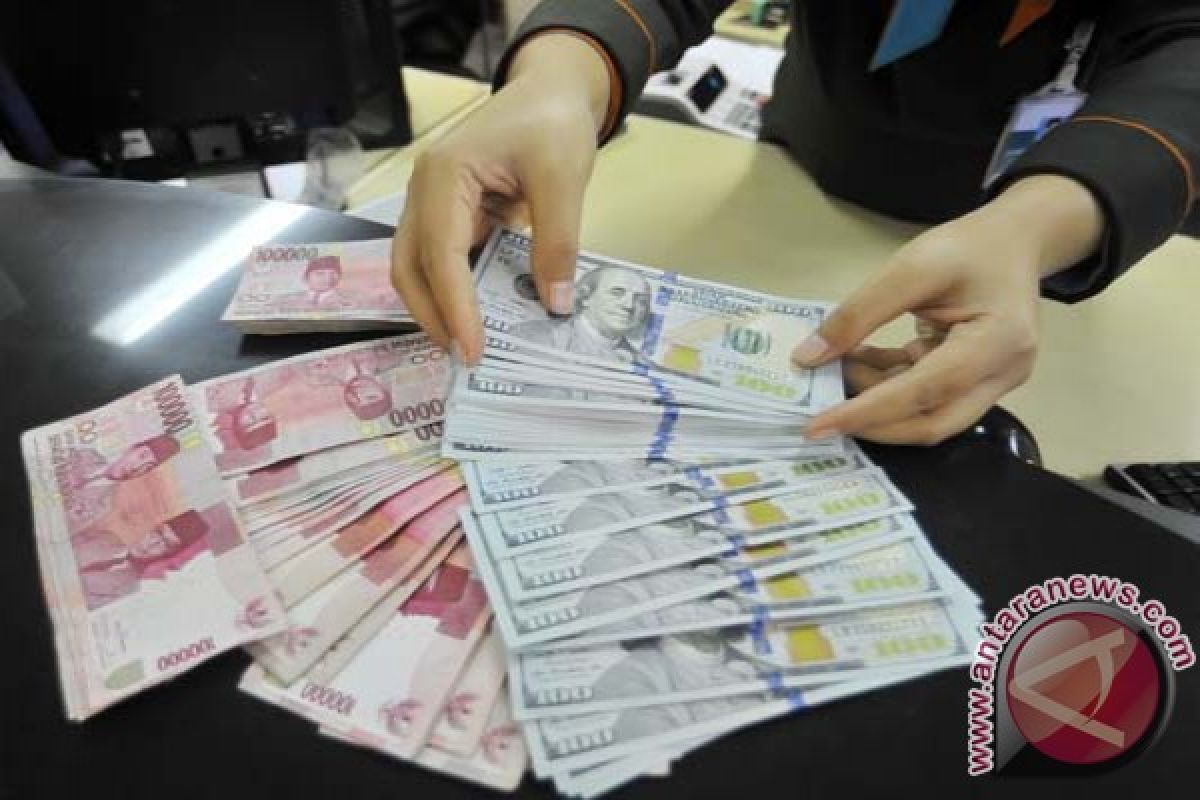Rector of Atma Jaya University Agustinus Prasetyantoko said it would be difficult for the rupiah to regain a stronger exchange rate amid the global uncertainty, which is expected to continue next year.
Yet, according to Bank Indonesia (BI) Governor Perry Warjiyo, the exchange value of the rupiah in its new equilibrium has been in a stable level based on the market mechanism. The rupiah has continued to depreciate since early this year.
For the first time since December 2015, the rupiah broke the psychological level of Rp14 thousand against the US dollar on May 7, 2018. It traded at Rp14,003 per dollar in the spot market. And this week it again broke another psychological level of Rp15 thousand per US dollar. On Friday (Oct 19) it was traded at Rp15.221 per US dollar
However, the depreciation of the Indonesia`s currency exchange rate might be good for investment if it combines with the regulation`s consistency and efficiency, according to the International Monetary Fund (IMF).
"Our advice to emerging markets, such as Indonesia, is that this kind of situation is actually good, because when a country is hit by annual shock, such as monetary crisis, it will allow the exchange rate to depreciate, which can be a shock-absorbing tool," IMF`s Financial Counselor and Director of the Monetary and Capital Markets Department, Tobias Adrian, stated during a press conference in Bali on Wednesday (Oct 10).
Yet, according to Agustinus Prasetyantoko, inflows of foreign capital in 2019 would not be as strong as in earlier years and liquidity tends to be tighter.
"With limited supply and liquidity rupiah would not return to the level of 13,000 or 14,000 per dollar. The level of 15,000 per dollar is a new equilibrium for rupiah," he said.
On the other hand, he said, rupiah had also hit the rock bottom that despite the global economic uncertainty, rupiah would not be sinking deeper in value than it is at present. He recalled, in political year in 2013, rupiah was under pressure, but it regained strength immediately after the winner of the presidential election was announced in 2014.
"The condition was similar and we could recover from the situation. It seems we do not have to be worried too much. Rupiah could weaken but would not be significant," Prasetyantoko said.
While the rupiah would not be expected to return the Rp14 thousand level, the rupiah exchange rate would be stable at its new equilibrium of Rp15 thousand against the greenback.
BI Governor Perry Warjiyo stated in Jakarta on Friday that the currency had stabilized when the rupiah exchange rate moved around Rp15,200 per US dollar.
"The exchange conditions remained stable, supply and demand in the markets went well, and the market mechanism moved well," Warjiyo noted.
The rupiah exchange rate in the Jakarta Interbank Spot Rate (Jisdor) announced on the BI page on Friday shows that the rupiah is at Rp15.221 per US dollar. Warjiyo remarked that the rupiah`s current exchange rate indicates the confidence of market players, including global investors, in the domestic economic conditions.
"Global developments from day to day have new news. It is natural if the rupiah exchange rate moves to respond," he pointed out.
The movement of the rupiah exchange rate, after breaking the level of Rp15 thousand per US dollar, is relatively stable, with a low level of volatility.
To mitigate the impact of global economic uncertainty over the rest of the year, banks forecast that BI will raise its benchmark 7-day reverse repo rate again this year to six percent, after hiking it five times over the year.
"BI`s benchmark interest will still increase by 25 basis points," Bank Mandiri Deputy President Director Sulaiman Arif Arianto stated on Wednesday (Oct 17).
According to Prasetyantoko, in short term, Bank Indonesia has been right in raising its benchmark interest rate to weather the impact of the rise in the fund rate of the Fed. The U.S. Central Bank is yet to raise its fund rate before the end of this year and next year.
Prasetyantoko went on to say that in mid-term export performance has to be improved to cut the current account deficit that rupiah would be more resilience in facing external turbulence.
The rupiah weakening is partly attributable to normalization of the policy of the Fed and the escalation of the trade war, which is feared to continue until 2019 mainly between China and the United States.
Tobias Adrian of the IMF noted Indonesia has a strong macro-prudential performance, where the economic growth is projected at 5.1 percent next year, despite its current account deficit that reached around 3 percent.
More importantly, rupiah`s depreciation was not only caused by current account deficit but also by external factors, mainly oil price hike globally of around US$60 to $80 per barrel this year and Indonesia`s financial stability as a crude oil importer.
"But, of course, the government of Indonesia has been intervening in the financial market in order to make sure that the liquidation in the financial market is orderly and consistent with the IMF`s advice on how to analyze macro-prudential performance," Adrian remarked.
Editing by Sri Haryati
Reporter: Andi Abdussalam
Editor: Fardah Assegaf
Copyright © ANTARA 2018












